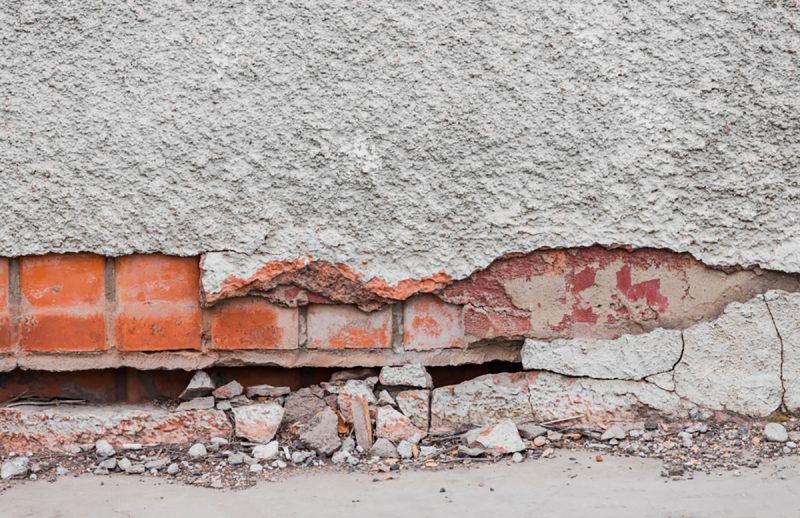Spalling concrete is a concrete foundation issue that usually occurs when there are vertical cracks in the concrete surface. Typically, such cracks will be located along the walls and in areas where weight is applied with time, such as around a foundation wall. Spalling can also occur with a concrete slab that has sunk below the ground surface, especially when there is settling. If you notice cracks in your concrete foundation, then it’s important to address this problem as soon as possible so that further damage can be avoided and the foundation will be able to support the weight of the building materials.
Most foundations, including concrete slabs and precast buildings, are built to withstand the weight of the materials they are built up to hold. Unfortunately, there are times when things can go wrong and the foundation can experience several problems that will cause it to sink or crack. This is especially common when soil pressure or other environmental factors are present and the soil cannot handle the weight of the additional volume of material placed on top of it. During some periods of increased environmental stress, for instance, during an extended period of drought or during a period of heavy rain, soil pressure can increase, which causes the soil to bulge upward. Such bulging may cause the foundation to sink or crack, which can result in the weakening or buckling of the foundation.
If the foundation begins to crack and sag, then it is already in bad condition and will need help from professionals who can repair any problems that may be present. In the case of severe spalling concrete, the only solution is to dig up the entire area where the foundation is situated and remove all the materials placed on top of it. If the damaged area is big enough, there are several options available to remove the foundation and repair the damages that have already been done. One of these options is to replace the concrete slabs with new ones. However, this may not always be possible, and in such cases, solid wall panels can be used.
Concrete walls are a great option for repairing damaged concrete foundations, as these walls can easily hold the extra weight of soil without allowing the slab to break. Walls made of concrete can also add more strength to the foundation, and they can be designed in different shapes, sizes, and configurations to suit different buildings. For example, you can opt for a basic straight wall for an apartment building, or you can create a corner block with one angled wall as the main support.
The concrete slab is a very important aspect of any building, as it determines its strength, thickness, and durability. A concrete slab is usually manufactured by pressing the concrete mix into a mold, and the resulting material is then poured onto the concrete slab. The concrete mix that is used should conform to building specifications, and it is usually mixed using high-density polyethylene (HDPE) plasticizer.
Once the concrete has been poured onto the mold, it is left to sit for a few days, during which time the concrete will harden and start to form into a solid material. If you have a concrete foundation that has not suffered a prior leak, then you will probably not need to spall the floor itself. However, if your floor has suffered a leak, then it is recommended that you spall the concrete foundation. The reason why you should spall the concrete foundation rather than simply repair the damage is that spalling the foundation can increase the load on the ground pump, while also causing structural damage to the other parts of the building.
After the concrete has completely set, the concrete is pumped into the hole it was poured into, through a hoist. The concrete then hardens and starts to pour itself around the holes, and once complete, it is tightly pressed against the previously created floors. It is important that the concrete is tightly squeezed into the floor spaces, as it does not allow any water to seep through. Once the concrete has completely set, it is covered with special matting, which prevents rainwater and snow from entering the foundation. Spalling your concrete slab is not the end of the story, however. After the matting has completely healed and the matting is no longer visible, the entire floor can be refilled with concrete once again.
In order for spalling concrete slab repairs to work properly, there are a number of things that must be taken into consideration. First, if there is a previous leak in the foundation, then you need to make sure that you address that issue before anything else is done. Secondly, if the ground pump has been damaged or disabled, then you need to fix that problem and ensure that the pump continues to function properly. Finally, if your entire foundation is peeling or crumbling, then the entire foundation needs to be replaced and reinstalled, and this is where selling comes into the picture.

